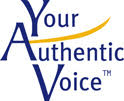 If you’ve ever been to Vegas, you know the chance you take when you roll the dice or slip your quarter into the one-armed bandit (there’s a reason they call slot machines that, you know). You could win or you could lose. Assuming you’ve got the extra coin, you might be willing to take that chance. The adrenaline rush is pretty addicting, and if you win, woo hoo!
If you’ve ever been to Vegas, you know the chance you take when you roll the dice or slip your quarter into the one-armed bandit (there’s a reason they call slot machines that, you know). You could win or you could lose. Assuming you’ve got the extra coin, you might be willing to take that chance. The adrenaline rush is pretty addicting, and if you win, woo hoo!
Question is, are you willing to make that wager with your audience by winging it with your speech? You might get lucky, or you might not. Are you willing to test the odds?
The consequences of winging it can be significant. Lost credibility, opportunity, and self-confidence, to name a few. So, is it wise to prepare? Drum roll please. The answer is . . . yes! Of course.
Okay, I can hear you thinking, really? Always? Yes. Even if you’re giving a one-minute introduction, prepare. And, dare I say it, script it.
Eee gads! Script it? Yes. Know what you’re going to say. That doesn’t mean you have to memorize it verbatim, or heaven forbid, read it from the platform. It means you take the time to develop your ideas, create a logical and emotionally compelling journey for your audience, and craft your transitions so you can take your audience seamlessly from one idea to the next.
To assist you, I’m delighted to share these five steps to preparing your presentation so you have a much greater chance of winning!
1. Know what message you want your audience to walk away with. Open your speech with your close in mind. This message could be as simple as “have confidence all is well,” or a specific piece of wisdom.
2. Create an open that contains something new, something that stirs their emotions, and something that answers the question, “what’s in it for me?” Invite your audience into the conversation in a novel way.
3. Mine your knowledge and experience to develop your content. This is a combination of what your audience wants to know (so do your research there) and what your audience needs to know.
4. Develop your outline to make your key points and back each one up with a story, facts/research, or by modeling what you’re asserting. Your other option is to give them a chance to experience it for themselves through a role play or individual exercise.
5. Create a strong close to bring your key message home and inspire your audience to take action. What do you want them to know, be, feel, do or remember?
Your outline looks like this:
Your open
a. Your first point (only need one of following to anchor)
Story
Academic, facts
Exercise
b. Your second point (only need one of following to anchor)
Story
Academic, facts
Exercise
c. Your third point (only need one of following to anchor)
Story
Academic, facts
Exercise
Your close/call to action
This outline looks pretty simple. It is! Filling it out takes effort. Many folks leave preparation to the last minute because they don’t “have the time.” That’s taking an unnecessary risk. Experience shows that making the time to prepare is not only a good bet, it’s the best bet you can make.
Part of the art of speaking is using language to translate your ideas and wisdom into an experience that can educate, inspire and ignite your audience. When you take the time to reflect and focus, it pays off big.
Gathering your thoughts and putting them into a coherent, inspiring presentation makes you a force to be reckoned with! And it feels pretty darn good.
You get to choose! I’d love to support you. I can be reached at Andrea@AndreaBeaulieu.com.
Photo courtesy of Flickr user CollegeDegree360

Leave A Comment